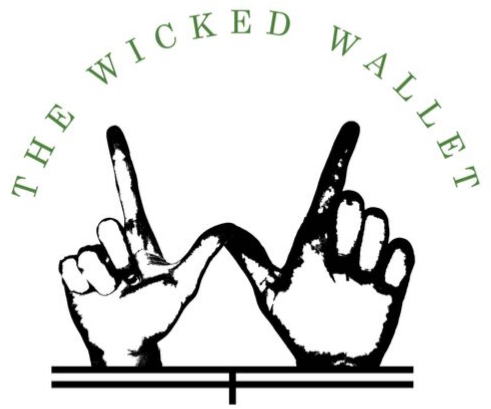Setting up your retirement accounts can sometimes be a daunting task. It can be difficult to understand the differences between each type of account and which one is right for you. Does your employer offer a retirement account such as a 401k, but you really don’t understand what a 401K is?
Understanding what retirement account is right for you and the stipulations that come with each of them is of the utmost importance for your financial health. It is absolutely crucial to start saving for retirement as early as possible. Keep on reading for the low down on these 5 different retirement accounts.
#1. The All Mighty 401K
Many people have at least heard of a 401K plan, but that doesn’t mean they understand the benefits and it’s stipulations.
Most full time employers offer a 401K plan, which is a workplace retirement account. Some employers offer an option between a traditional 401K and a roth 401K. The difference between the two is that with a traditional 401K your contributions are taxed when you withdraw your funds and with a roth 401K your contributions are taxed when upon contribution, thus you do not have to pay taxes again when you withdraw the funds.
A benefit that many companies offer their employees is a 401K contribution match up to a certain percent. For example, a company may offer to match 5% of all all 401K contributions. That means that if you put 5% of your paycheck towards your 401K then they will also put that same amount into your account, effectively making your contribution amount 10%. This is a huge perk and if you are not contributing at least the max percent that your company will match you on then you’re missing out on free money.
Other than free money from an employer match, 401K plan also offer you tax advantages. How So? Well with a traditional 401K, the funds that you invest are taken out of your pre-taxed paycheck, which reduces your taxable income. In layman’s terms, if you make $50,000 a year and contribute $10,000 to your 401K then your taxable income will be $40,000. If you didn’t contribute anything to your 401K then your taxable income would be $50,000.
Every company offers different 401K investment options. Some may offer you a laundry list of funds to invest your money in while others may only have a handful. Be sure to research your companies plan and find out what is best for you.
There are also stipulations with a 401K, one of them being the amount that you are allowed to contribute annually. This contribution limit comes from the IRS and generally varies from year to year. For example, in 2018 the contribution limit was $18,500 and in 2019 the limit is $19,000. The IRS allows individuals over 50 to contribute up to $6,000 more than the limit, they call this catch up contributions.
Other stipulations include the age that you are allowed to withdraw your investment and the penalties for withdrawing funds early. The IRS allows you to withdraw funds penalty free at the age of 59.5. Any withdrawals before the ripe age of 59.5 may result in a 10% penalty fee on the amount that you withdraw any you will also have to income tax on that withdraw and possibly state tax as well. Be sure to chat with your companies HR department and possibly a financial advisor to decide what retirement account is right for you.
#2. Traditional Individual Retirement Account (IRA)
The traditional IRA is a great option if your employer does not offer a 401K plan or if you have maxed out your 401K and want to contribute more towards retirement.
A traditional IRA is similar to a 401K meaning that you are taxed when you withdraw the money. However, the contribution limits are different. For 2019, the IRS allows you to contribute up to $6,000 annually and an extra $1,000 annually if you qualify for catch up contributions (have to be at least 50 years old). Early withdrawal fees may apply if you take distributions before the age of 59.5.
#3. Roth IRA
Roth IRAs have the same concept as a roth 401K, so you are taxed when you make contributions and not when you withdraw. The contribution limits are the same as a traditional IRA and they do also catch up contributions.
An awesome perk to a roth IRA is that you do not have to wait until you are 59.5 to make withdrawals. The one stipulation is that you can not make withdrawals until 5 years have passed from your first contribution. If you are considering early retirement then this can be a great source of cash to hold you over until you can access your 401K contributions without penalty.
#4. Simplified Employee Pension IRA (SEP IRA)
If you are a self employed individual with no employees then you qualify for an SEP IRA. This account acts similar to a traditional IRA, contributions are not taxed until they are withdrawn and you are subject to the same early withdrawal penalties.
However, one of the main differences and biggest perk to an SEP IRA is the contribution limits. As of 2019, an individual can contribute $56,000 or 25% of their annual income, whichever is less. That means if you make $100,000 annually then you are allowed to invest $25,000 that year not $56,000. If you earn $224,000 or more the max you can invest is $56,000. If you are a self employed individual with a high annual income this account can be extremely helpful.
#5. 403B and 457B
These two plans are spin offs of a 401K. A 403B is a retirement account for educators and non profits, and a 457B is primarily for government employees.
The 403B is has the exact same contribution limits and withdrawal rules as a 401K, see above 401k section for limits and rules.
The 457B plan is super advantageous if your employer also offers a 401K option. Why you ask? Because the IRS allows you to contribute to both plans, so in 2019 you can contribute $19,000 to your 457B account and $19,000 to your 401K which would reduce your taxable income by $38,000! If you are one of these lucky individuals you should make it your goal to try to max out both of these accounts.
Closing Thoughts
Well guys I hope you enjoyed this post and learned something about retirement account options. If you have any questions be sure to hit us up in the comment section. Remember that your financial goals are unique to you so what Jonny- know-it-all says to invest in may not be right for you. Be sure to speak with your companies human resources rep to get a run down on their retirement account options and choose what’s best for you. My one piece of advice is to start contributing to your retirement accounts now – the earlier you to save for retirement, the better off you will be.
Looking for more great reads? Check these out!



